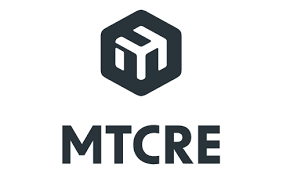Foundations of the MTCRE (MikroTik Certified Routing Engineer) - Module 0

MTCRE Questions & Answers
1. What is the MTCRE?
The MTCRE stands for MikroTik Certified Routing Engineer.
It is an official MikroTik certification focused specifically on routing.
It builds on the MTCNA and covers advanced static routing, dynamic routing with OSPF, tunnels, VLANs, and redundancy mechanisms like ECMP and VRRP.
2. How does the MTCRE differ from the MTCNA?
Think of it as foundation vs. specialization:
- MTCNA: Entry-level certification covering the basics of RouterOS, IP addressing, NAT, DHCP, wireless, firewall, and introductory routing.
- MTCRE: Intermediate certification focused on routing. It covers advanced static routes, OSPF multi-area, route filtering, tunnels, VLANs, QinQ, and redundancy.
- Prerequisite: You need a valid MTCNA to attempt the MTCRE.
In short: MTCNA makes you a generalist, MTCRE makes you a routing specialist.
3. What are the benefits of getting an MTCRE in addition to the MTCNA?
- Deeper Knowledge: Learn how to design resilient, scalable routed networks.
- Career Value: Employers value routing specialization for ISP and enterprise roles.
- Hands-On Skills: Gain practical experience with OSPF, tunnels, multi-ISP setups, and VLANs.
- Stepping Stone: Required for higher-level certs like MTCINE (BGP/MPLS) and MTCIPv6E.
- Competitive Edge: Sets you apart since many engineers stop at MTCNA.
4. What can I do with the MTCRE?
With MTCRE skills, you can:
- Design and manage multi-router topologies for ISPs or enterprises.
- Deploy OSPF networks with multi-area, filtering, and summarization.
- Implement redundancy and failover with ECMP and recursive routing.
- Configure tunnels (GRE, IPIP, EoIP) for site-to-site connectivity.
- Segment networks using VLANs and QinQ.
- Provide LAN gateway redundancy using VRRP.
Career Paths: Network engineer, routing specialist, systems integrator, or consultant in ISP and enterprise environments.
Format of this Course
1. Structure
- Modules: 6 total (Foundations, Static Routing, Point-to-Point, VPNs/VLANs, OSPF, Redundancy & Final Lab).
- Lessons: Each module contains multiple lessons, combining theory + labs.
- Flow: Every topic starts with a short theory session → followed by a hands-on lab → finished with review questions.
2. Lesson Components
Each lesson includes:
- Objective: What you’ll learn and why it matters.
- Topology Diagram: Network layout in EVE-NG.
- Step-by-Step Instructions: CLI commands + Winbox navigation.
- Verification: How to confirm the configuration works.
- Knowledge Check: 2–3 exam-style questions.
3. Lab Environment
- Platform: EVE-NG (community or pro).
- Devices: MikroTik CHR routers + VPCs (for PCs).
- Base Topology: 3–6 routers interconnected, with optional ISP clouds.
- Access: Winbox, WebFig, and SSH.
EVE-NG & MTCRE Course Setup
What is EVE-NG?
EVE-NG (Emulated Virtual Environment – Next Generation) is a network emulation platform. It lets you run virtual routers, switches, firewalls, and even PCs inside a single environment.
- Think of it as a virtual lab in a box — you can design topologies, connect devices, and practice configurations without needing physical hardware.
- It supports many vendors (Cisco, Juniper, Palo Alto, MikroTik, etc.), making it very popular for certification training.
How does EVE-NG apply to this course?
For the MTCRE course, we’ll use MikroTik Cloud Hosted Router (CHR) inside EVE-NG.
- Learners can build multi-router topologies just like in real-world ISP or enterprise networks.
- We’ll practice static routing, OSPF, tunnels, VLANs, redundancy — everything needed for the MTCRE exam.
- Instead of needing multiple physical MikroTik devices, learners run all routers virtually in EVE-NG.
Bottom line: EVE-NG is the backbone of our labs. It turns your laptop/desktop into a full MikroTik training lab.
Setup Guide (Parts 1–3)
To follow along with the course, first set up EVE-NG and MikroTik CHR using these step-by-step guides:
Part 1: Installing EVE-NG on VMware Workstation
Installing EVE-NG using VMware Workstation – Part 1
- Download and install VMware Workstation.
- Deploy the EVE-NG virtual machine.
- Configure basic resources (CPU, RAM, disk).
Part 2: Configuring EVE-NG Management Access
Installing EVE-NG using VMware Workstation – Part 2
- Configure network interfaces for EVE-NG.
- Assign IP address for management.
- Access the EVE-NG Web UI in your browser.
Part 3: Adding MikroTik CHR to EVE-NG
Installing MikroTik CHR in EVE-NG – Part 3
- Download MikroTik CHR image.
- Import and convert it to the correct format for EVE-NG.
- Add CHR to the node list so it can be used in labs.
Once Parts 1–3 are complete, your virtual lab environment is ready — you’ll have EVE-NG running with MikroTik CHR available, and we can dive straight into the Module 1 static routing labs.
